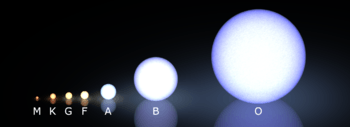HIP 100963
| Observation data Epoch J2000.0 Equinox J2000.0 (ICRS) | |
|---|---|
| Constellation | Vulpecula |
| Right ascension | 20h 28m 11.81471s[1] |
| Declination | +22° 07′ 44.3723″[1] |
| Apparent magnitude (V) | +7.088[2] |
| Characteristics | |
| Spectral type | G5[3] |
| B−V color index | +0.65[2] |
| V−R color index | +0.39[2] |
| R−I color index | +0.3[2] |
| Astrometry | |
| Radial velocity (Rv) | −1.6[4] km/s |
| Proper motion (μ) | RA: −23.90[1] mas/yr Dec.: −243.96[1] mas/yr |
| Parallax (π) | 35.42 ± 0.59[1] mas |
| Distance | 92 ± 2 ly (28.2 ± 0.5 pc) |
| Details | |
| Mass | 0.998 ± 0.006[5] M☉ |
| Luminosity | 0.968 ± 0.043[5] L☉ |
| Temperature | 5,779 ± 50[5] K |
| Metallicity [Fe/H] | −0.002[5] dex |
| Rotational velocity (v sin i) | 2.39[6] km/s |
| Age | 2.01–3.80[5] Gyr |
| Other designations | |
| Database references | |
| SIMBAD | data |
HIP 100963 is a G-type star in the faint northern constellation of Vulpecula[2] resembling the Sun. It has an apparent visual magnitude of approximately 7.1,[2] making it generally too faint to be seen with the naked eye in most circumstances. The distance to this star, as determined using parallax measurements from the Hipparcos mission, is around 92 light-years (28 parsecs).[1]
This star has a stellar classification of G5,[2] making it a G-type star with an undetermined luminosity class. It has similar mass, temperature and chemical abundance to the Sun and was called a solar twin in a 2009 study, although its lithium abundance is three to four times that of the Sun and it is much younger. This lithium excess suggests that the star has a younger age of between 2.01 and 3.80 billion years, compared to the previous estimate of 5.13+0.00
−2.99 Ga from a 2007 study.[5]
Sun comparison
This chart compares the sun to HIP 100963/HP 195034.
| Identifier | J2000 Coordinates | Distance (ly) |
Stellar Class |
Temperature (K) |
Metallicity (dex) |
Age (Gyr) |
Notes | |
|---|---|---|---|---|---|---|---|---|
| Right ascension | Declination | |||||||
| HD 195034 [7] | 20h 28m 11.8s | +22° 07′ 44″ | 92 | G5 | 5,779 | −0.002 | 2.9 | [8] |
| Sun | — | — | 0.00 | G2V | 5,778 | +0.00 | 4.6 | [9] |
To date no solar twin with an exact match as that of the Sun has been found, however, there are some stars that come very close to being identical to that of the Sun, and are such considered solar twins by the majority of the public. An exact solar twin would be a G2V star with a 5,778K temperature, be 4.6 billion years old, with the correct metallicity and a 0.1% solar luminosity variation.[10] Stars with an age of 4.6 billion years are at the most stable state. Proper metallicity and size are also very important to low luminosity variation. [11][12][13]

References
- 1 2 3 4 5 6 van Leeuwen, F. (November 2007), "Validation of the new Hipparcos reduction", Astronomy and Astrophysics, 474 (2): 653–664, arXiv:0708.1752
 , Bibcode:2007A&A...474..653V, doi:10.1051/0004-6361:20078357
, Bibcode:2007A&A...474..653V, doi:10.1051/0004-6361:20078357 - 1 2 3 4 5 6 7 8 LTT 15980 -- High proper-motion Star, database entry, SIMBAD. Accessed on line May 23, 2016.
- ↑ White, Russel J.; Gabor, Jared M.; Hillenbrand, Lynne A. (June 2007), "High-Dispersion Optical Spectra of Nearby Stars Younger Than the Sun", The Astronomical Journal, 133 (6): 2524–2536, arXiv:0706.0542
 , Bibcode:2007AJ....133.2524W, doi:10.1086/514336
, Bibcode:2007AJ....133.2524W, doi:10.1086/514336 - ↑ Nordström, B.; et al. (May 2004). "The Geneva-Copenhagen survey of the Solar neighbourhood. Ages, metallicities, and kinematic properties of ˜14 000 F and G dwarfs". Astronomy and Astrophysics. 418 (3): 989–1019. arXiv:astro-ph/0405198
 . Bibcode:2004A&A...418..989N. doi:10.1051/0004-6361:20035959.. See the Vizier entry for this star.
. Bibcode:2004A&A...418..989N. doi:10.1051/0004-6361:20035959.. See the Vizier entry for this star. - 1 2 3 4 5 6 Do Nascimento, J. D., Jr.; et al. (July 2009). "Age and mass of solar twins constrained by lithium abundance". Astronomy and Astrophysics. 501 (2): 687–694. arXiv:0904.3580
 . Bibcode:2009A&A...501..687D. doi:10.1051/0004-6361/200911935.
. Bibcode:2009A&A...501..687D. doi:10.1051/0004-6361/200911935. - ↑ Takeda, Y.; et al. (June 2010), "Behavior of Li abundances in solar-analog stars. II. Evidence of the connection with rotation and stellar activity", Astronomy and Astrophysics, 515: A93, arXiv:1003.1564
 , Bibcode:2010A&A...515A..93T, doi:10.1051/0004-6361/200913897
, Bibcode:2010A&A...515A..93T, doi:10.1051/0004-6361/200913897 - ↑ HD 195034 at SIMBAD - Ids - Bibliography - Image.
- ↑ Takeda, Yoichi; Tajitsu, Akito (2009). "High-Dispersion Spectroscopic Study of Solar Twins: HIP 56948, HIP 79672, and HIP 100963". Publications of the Astronomical Society of Japan. 61 (3): 471–478. arXiv:0901.2509
 . Bibcode:2009PASJ...61..471T. doi:10.1093/pasj/61.3.471.
. Bibcode:2009PASJ...61..471T. doi:10.1093/pasj/61.3.471. - ↑ Williams, D.R. (2004). "Sun Fact Sheet". NASA. Retrieved 2009-06-23.
- ↑ NASA, Science News, Solar Variability and Terrestrial Climate, Jan. 8, 2013
- ↑ University of Nebraska-Lincoln astronomy education group, Stellar Luminosity Calculator
- ↑ National Center for Atmospheric Research, The Effects of Solar Variability on Earth's Climate, 2012 Report
- ↑ Most of Earth’s twins aren’t identical, or even close!, by Ethan on June 5, 2013